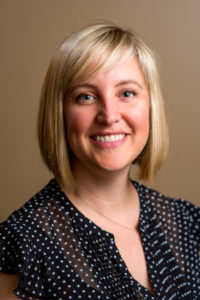By Dr. Lauren Barlis
 My wish is that a more thoughtful approach to standardized testing through expanded educational choice can make academic success stories – for parents and teachers – more common.
My wish is that a more thoughtful approach to standardized testing through expanded educational choice can make academic success stories – for parents and teachers – more common.
Here’s one example of what I mean.
Barbee Day, a teacher at Holy Family Catholic School in St. Petersburg, Fla., became a mother of three overnight when she adopted her nieces and nephews from foster care. They now attend Barbee’s school thanks to a Florida Tax Credit Scholarship.
Barbee feels the power of choice every day. She chose to both teach at and send her kids to the same private school. And there’s more. As a teacher, she feels strongly about her school’s choice to use a standardized test that gives her more information as a mother, and gives her children’s teachers more opportunities to customize their students’ learning.
“If you were an educator like me,” Day said, “you would have endless questions about your new children’s educational histories. All I had [when I adopted them] were some past years’ report cards that told me little about what they actually knew or learned in the classroom.”
Often the only information that parents receive on their children’s academic achievement are report cards and standardized test data. Private schools in Florida that participate in the Florida Tax Credit, Gardiner Scholarship, or Hope Scholarship programs must annually administer a test to monitor the progress of those students.
Typical standardized test data is sometimes referred to as “autopsy” data. Since these tests are designed to measure mastery, they are given at the end of the year. Often the scores are not received until after the students have left for the summer, and the information cannot be used to drive instruction. The scores often get mailed to parents and stuffed in a file cabinet.
Step Up For Students (a non-profit that administers the private school scholarships and hosts this blog) and its Office of Student Learning wanted something different for the schools we support. That’s why we partnered with Northwest Evaluation Association (NWEA) to connect our schools with the Measures of Academic Progress (MAP) Growth assessment, a computer-based adaptive test that is offered three times per year and designed to measure growth and achievement.
In 2016, 39 private schools in Florida volunteered to participate in a pilot study of the MAP Growth assessment. In 2017, another 200 schools chose to join the partnership. For the 2018-19 school year, the number has grown to almost 400 schools.
Unlike with top-down accountability, in which educators often bristle at academic measurements being imposed on them, the ability to choose to participate in MAP Growth creates a sense of buy-in for the stakeholders. That can produce better outcomes.
For example, even though the Florida Catholic Conference has required all Catholic schools to use the TerraNova standardized achievement test once per year, Holy Family chose to join the SUFS/NWEA MAP Growth partnership. Having choices for testing is empowering for schools like Holy Family, just as educational choice empowers parents and students to be in the learning environments that best suit them.
Principal Abby Rudderham said that choosing to use MAP Growth data is improving their instruction and supporting them in meeting the needs of their students.
“Each testing cycle (fall, winter, and spring) allows them to create goals with students, and it drives their instruction. We are also using the MAP Growth data to pull kids out of their normal classes and group them by the skills they are ready to learn, regardless of grade level, using a program called Power Hour during the last hour of school every Monday,” Rudderham said.
Schools in the SUFS/NWEA Partnership using Power Hour have increased the growth of their student population dramatically by targeting directly the skills that each student is ready to learn. On average, schools using Power Hour and other programs designed to use MAP Growth data to inform their instruction have increased the percentage of their students making a year’s worth of growth or more by 40%.
Holy Family saw 68% of their students meet or exceed their growth targets in Math during the 2017-18 school year. The majority of their students are on grade level or above in Math, and 32% of their students attend Holy Family on a Florida Tax Credit Scholarship.
“I am so thankful that my principal chose to keep using MAP at our school,” Day said. “Since we’ve implemented MAP, I’ve used it to drive my own classroom instruction, and now my own children’s. By having MAP data available, I can make the transition from teacher to teacher-mom more confidently, knowing that I am serving all the children I work with to reach their fullest potential.”
Dr. Lauren Barlis is director of learning management in Step Up For Students’ Office of Student Learning.
Editor’s Note: This is the sixth in a series of posts where various members of the education choice world share an #edchoice wish. For yesterday’s post, CLICK HERE.
COMING MONDAY: Keith Jacobs, manager of the Charter School Initiative for Step Up for Students wishes for equitable funding for education choice.